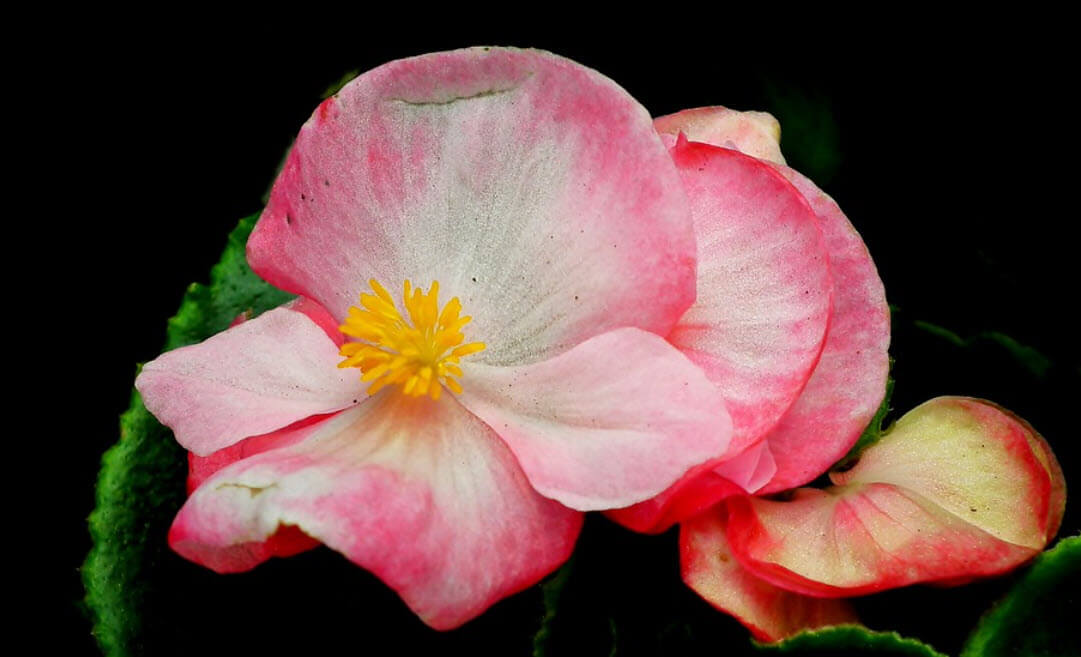Wax begonias are beautiful and low-maintenance indoor plants that can add a pop of color to your home or office. However, like all plants, they require specific care to thrive.
In this post, we’ll provide you with a complete guide to caring for wax begonias, including instructions on how to repot your plant, tips for providing adequate lighting, soil, and water, as well as temperature requirements. We’ll also discuss common problems that can affect your plant, such as pests and diseases, and provide advice on how to prevent and treat them. Join us as we guide you through the process of caring for your wax begonia, ensuring it remains healthy and beautiful for years to come.
Wax Begonia (Begonia Semperflorens)
Light: sun
Temperature: 65 to 70 F – 19 to 21 C
Humidity: 40% to 45%
Soil: potting
Watering: every third day
Spraying: daily

Source: pixabay.com
Native to Brazil, the Begonia semperflorens comes in many varieties with red, pink or white flowers. Flowering is almost year-round, and the plant will grow out of doors. No wonder it is popular with beginning plant-lovers.
A temperate climate and a bright place are needed. During the blooming period, the plant needs heavy and frequent watering. Watering should be sharply reduced during the resting period, in the winter. To keep the leaves from falling off, the Begonia semperflorens should be put in direct sunlight during that period. If in spite of this the leaves continue to fall off, wait for the new growing period and as soon as it begins cut the plant back and repot it in rich soil.
Propagation is done with slips, which will root easily in a glass of water. If vou plant your begonia outside in the garden for the summer, when fall arrives, dig it up with a good-sized clump of soil and use a fairly large pot for repotting. When you bring your plant back inside, put it in a bright but cool place for a few days to allow it a period of transition.
Repotting
Wax begonias should be repotted every 1-2 years or when they become root-bound. Here are the steps for repotting your wax begonia:
- Choose a new pot that is one size larger than the current pot, with drainage holes at the bottom.
- Fill the new pot with fresh potting soil, leaving enough space for the root ball of the plant.
- Gently remove the wax begonia from its old pot, being careful not to damage the roots.
- Loosen any tangled or circling roots, and trim any dead or damaged roots.
- Place the wax begonia in the center of the new pot, making sure the top of the root ball is level with the soil surface.
- Fill in around the root ball with additional potting soil, pressing down firmly to eliminate any air pockets.
- Water the plant thoroughly, making sure the soil is evenly moist.
- Place the plant in a well-lit area, but avoid direct sunlight, as it can burn the leaves of the plant.
- Monitor the plant for the first few days after repotting, and adjust watering as necessary to keep the soil moist but not waterlogged.
Lighting
Wax begonias prefer bright, indirect light. They can tolerate some direct sunlight, especially in the morning or late afternoon when it is less intense, but too much direct sun can scorch their leaves.
If you’re growing wax begonias indoors, place them near a bright, east-facing window or in a spot that receives bright, indirect light. If your plant is not getting enough light, you may notice that its leaves turn yellow and drop off.
If you’re growing wax begonias outdoors, they can be planted in partial shade or in a spot that receives bright, filtered light for most of the day. Avoid planting them in full sun, as this can cause their leaves to burn and curl.
Watering
Wax begonias prefer to be kept evenly moist, but not waterlogged. Overwatering can lead to root rot and other problems, while underwatering can cause the plant to wilt and dry out.
When watering your wax begonia, it’s important to water thoroughly so that the entire root ball gets moistened. Wait until the top inch of soil is dry to the touch before watering again.
If you’re growing wax begonias in containers, make sure the pot has drainage holes at the bottom so that excess water can drain out. If the pot does not have drainage holes, the plant can become waterlogged, leading to root rot and other problems.
If you’re growing wax begonias outdoors, they may require more frequent watering during hot, dry weather, especially if they are planted in containers. Mulching around the base of the plant can help to retain moisture and prevent the soil from drying out too quickly.
Temperature Tips
Wax begonias prefer moderate temperatures and can be sensitive to extremes in temperature.
Ideally, wax begonias should be kept in an environment where the temperature ranges from 65-75°F (18-24°C) during the day and 60-65°F (15-18°C) at night. They can tolerate slightly cooler temperatures, but should not be exposed to temperatures below 50°F (10°C), as this can damage the plant.
If you’re growing wax begonias outdoors, it’s important to keep an eye on the weather and protect the plants from frost and freezing temperatures. If temperatures are expected to drop below 50°F (10°C), move the plants indoors or cover them with a frost blanket or other protective covering.
If you’re growing wax begonias indoors, keep them away from windows and doors where they may be exposed to drafts or sudden changes in temperature. It’s also important to avoid placing them near heating or cooling vents, as this can cause the temperature around the plant to fluctuate.
Pulsar